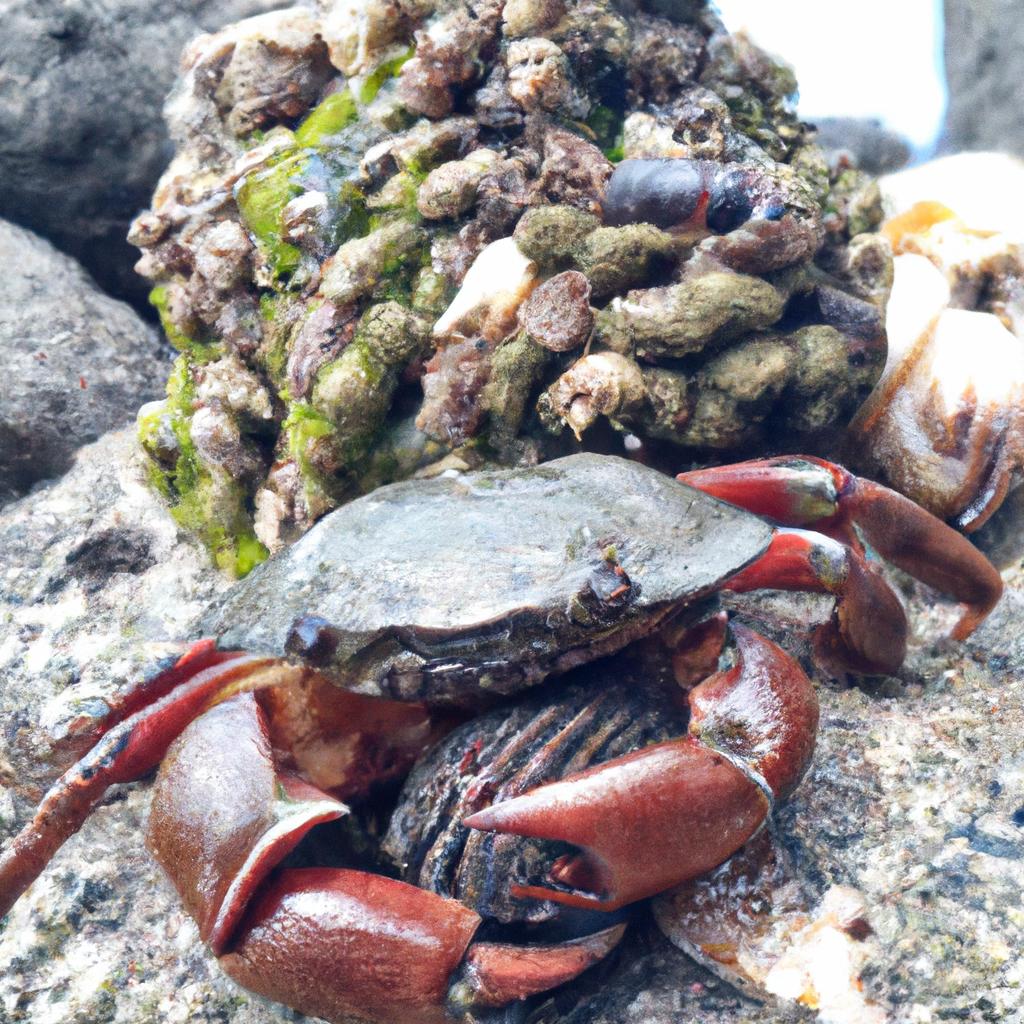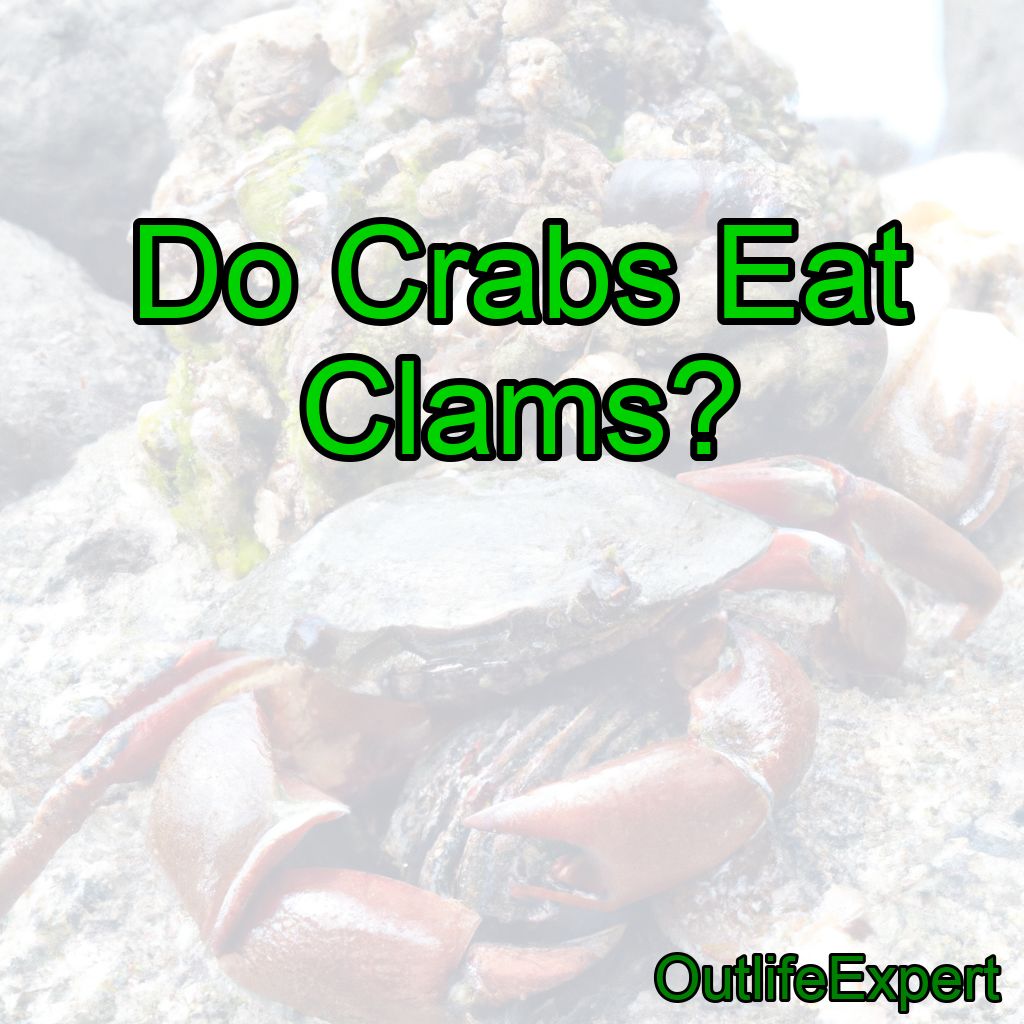I’ve always been fascinated by the incredible diversity of marine life, and during my visits to the beach, I find myself observing the different creatures that inhabit the shoreline.
One day, while watching some crabs scuttle across the sand, I found myself wondering:
Do crabs eat clams? The answer isyes, crabs do eat clams.However, this seemingly simple answer actually involves a lot of fascinating details about the behavior and biology of crabs.
Let’s dive in and explore the world of crabs and their dietary habits!
Contents
A Diverse Crab World
Crabs are a diverse group of crustaceans, with over 4,500 known species! They can be found in various environments, from freshwater to the deep sea. With such diversity in habitat and morphology, it’s not surprising that crabs exhibit a wide range of feeding behaviors.
Some crabs are herbivores, some are carnivores, and some are omnivores.
Crabs: The Scavengers of the Sea
Many crab species are opportunistic scavengers, which means they’ll eat just about anything they can find.
This includes plant material, dead animals, and – you guessed it – clams! Crabs can be quite resourceful when it comes to finding food, and they’re known to use their strong claws and legs to dig through sediment and pry open the shells of clams and other mollusks.
When Do Crabs Eat Clams?
Crabs are more likely to eat clams when other food sources are scarce. I remember one particular beach trip where I noticed a large number of empty clamshells littered across the sand.
As I dug through the sand, I discovered several crabs feasting on the clam remains. It was fascinating to watch these resourceful creatures take advantage of an abundant food source.
How Do Crabs Eat Clams?

Crabs possess powerful claws that they use to crack open the hard shells of clams. Some species, such as the stone crab, have specialized claws designed specifically for crushing shells.
Once a crab has cracked open the clam’s shell, it uses its smaller, more dexterous limbs to extract and consume the soft tissue inside.
How Often Do Crabs Eat Clams?
The frequency with which crabs eat clams depends on the availability of other food sources and the specific dietary preferences of the crab species. Some crabs may eat clams more often if they are abundant in their environment, while others may only consume them occasionally as part of a more varied diet.
Why Do Crabs Eat Clams?
Crabs eat clams for the same reason that they eat other food sources: to obtain the energy and nutrients they need to survive and reproduce.
Clams, like many other marine invertebrates, are a rich source of protein and other essential nutrients.
By consuming clams, crabs can ensure they have the energy to grow, molt, and reproduce successfully.
Are There Any Risks to Crabs Eating Clams?
One potential risk associated with crabs eating clams is the presence of harmful substances, such as toxins or pollutants, in the clam’s tissue. In some cases, these substances can accumulate in the clam’s body, posing a risk to the crab when it consumes the clam.
However, such risks are relatively rare and do not pose a significant threat to most crab populations.
Conclusion
In conclusion, yes, crabs do eat clams. Crabs are opportunistic scavengers that consume a variety of food sources, including clams, to obtain the energy and nutrients they need to survive and reproduce.
They use their powerful claws to crack open the hard shells of clams and extract the soft tissue inside.
While crabs may not eat clams all the time, these mollusks can form an important part of their diet, especially when other food sources are scarce.
FAQs
Will hermit crabs eat clams?
Yes, hermit crabs are known to eat clams. They are omnivores and will consume a variety of foods, including plant matter, meat, and seafood.
What does a crab eat?
Crabs are omnivores and eat a variety of food including algae, mollusks, small fish, plankton, and detritus.
What animal eats the most clams?
The animal that eats the most clams is the sea otter.
How often do crabs eat clams?
Crabs typically eat once or twice a day, but it can vary depending on the species and their environment.
What seafood can hermit crabs eat?
Hermit crabs can eat a variety of seafood such as shrimp, fish, krill, and plankton. It is important to ensure that the seafood is cooked and free from any additives or preservatives.
Do blue claw crabs eat clams?
Yes, blue claw crabs are known to eat clams. They are omnivorous and will feed on a variety of foods including small fish, mollusks, and crustaceans.




